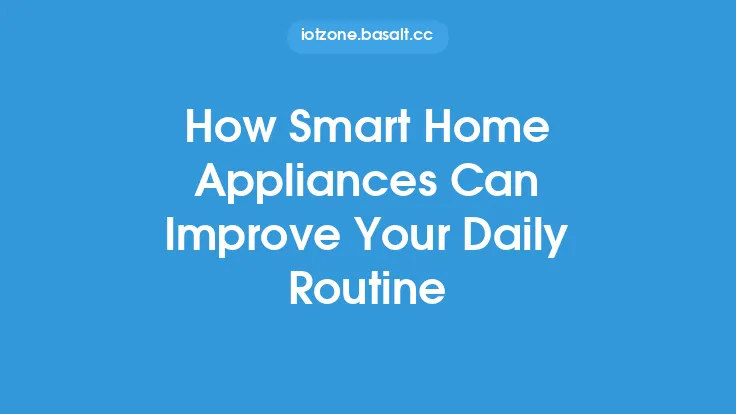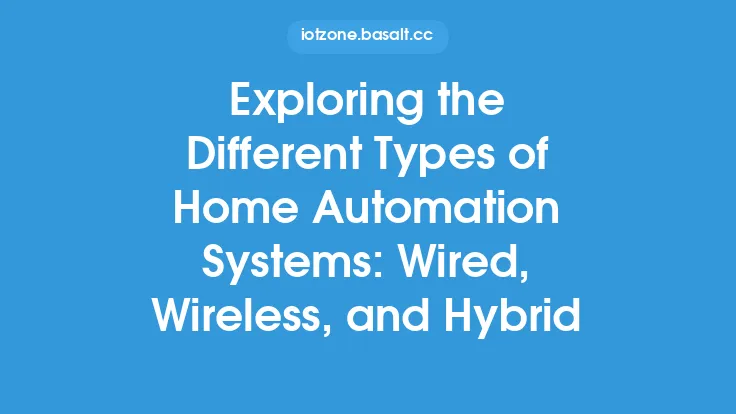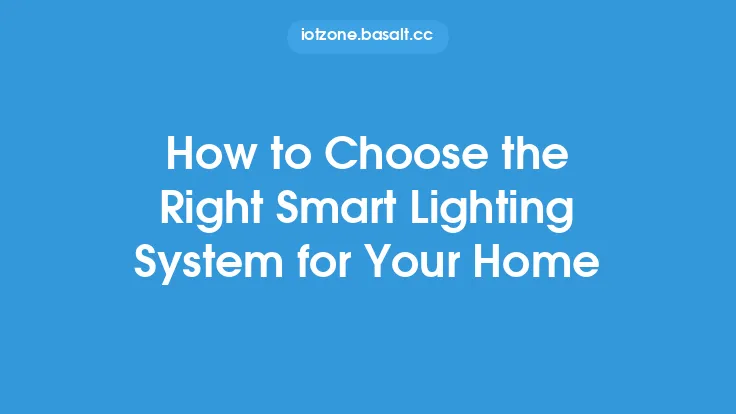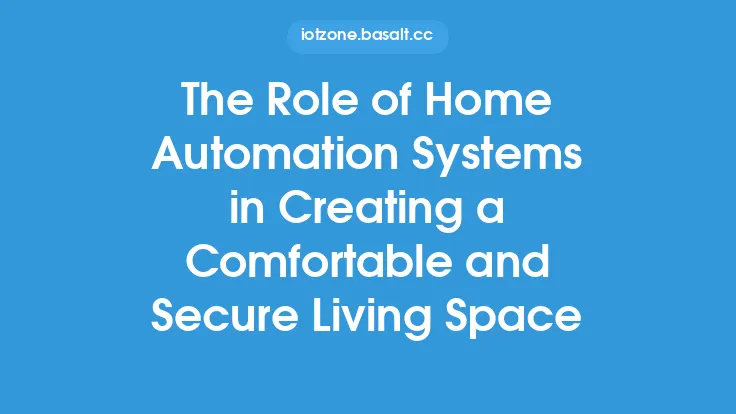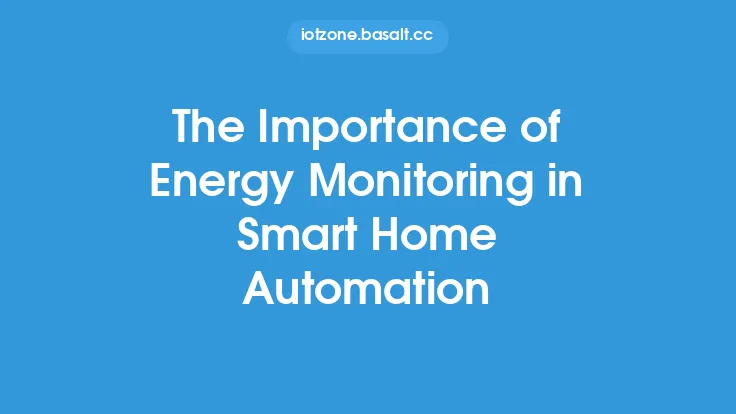The concept of home automation has been around for several decades, but it's only in recent years that it has become a mainstream phenomenon. With the advancement of technology and the proliferation of smart devices, home automation systems have become more sophisticated, affordable, and accessible to the masses. At its core, home automation is about creating a living space that is comfortable, convenient, and secure. By integrating various devices and systems, homeowners can enjoy a seamless and automated living experience that enhances their overall quality of life.
What is Home Automation?
Home automation refers to the use of technology to control and monitor various aspects of a home, including lighting, temperature, security, entertainment, and appliances. This is achieved through a network of devices, sensors, and controllers that communicate with each other to create a cohesive and automated system. Home automation systems can be customized to meet the specific needs and preferences of homeowners, allowing them to create a personalized living environment that suits their lifestyle.
Benefits of Home Automation Systems
Home automation systems offer a wide range of benefits that can improve the quality of life for homeowners. Some of the most significant advantages include increased convenience, enhanced security, improved energy efficiency, and a more comfortable living environment. With home automation, homeowners can control their lights, thermostats, and appliances remotely, using a smartphone or tablet. This means they can turn off lights, adjust the temperature, or arm their security system from anywhere in the world, as long as they have an internet connection.
How Home Automation Systems Work
Home automation systems typically consist of a central hub or controller that connects to various devices and sensors throughout the home. These devices can include lights, thermostats, security cameras, door locks, and appliances, among others. The central hub uses a communication protocol, such as Wi-Fi, Bluetooth, or Zigbee, to communicate with these devices and receive data from sensors. This data is then used to automate various tasks, such as turning on lights when someone enters a room or adjusting the temperature based on the time of day.
Automation and Control
One of the key features of home automation systems is automation and control. This refers to the ability to program devices to perform specific tasks at specific times or in response to certain events. For example, homeowners can set their lights to turn on automatically when they enter a room or adjust the temperature to a comfortable level when they wake up in the morning. Automation and control can also be used to enhance security, such as by setting lights to turn on and off randomly when the home is unoccupied to deter intruders.
Energy Efficiency and Sustainability
Home automation systems can also play a significant role in reducing energy consumption and promoting sustainability. By automating tasks such as turning off lights and appliances when not in use, homeowners can reduce their energy bills and minimize their carbon footprint. Additionally, home automation systems can be integrated with renewable energy sources, such as solar panels, to optimize energy production and consumption.
Comfort and Convenience
Home automation systems can greatly enhance the comfort and convenience of a living space. By automating tasks such as adjusting the temperature, lighting, and entertainment systems, homeowners can create a personalized environment that suits their lifestyle. For example, they can set their favorite music to play when they enter a room or adjust the lighting to create a cozy atmosphere for movie nights.
Security and Safety
Home automation systems can also provide an added layer of security and safety for homeowners. By integrating security cameras, door locks, and motion sensors, homeowners can monitor their home remotely and receive alerts when suspicious activity is detected. Additionally, home automation systems can be programmed to turn on lights or make noise when an intruder is detected, deterring them from entering the home.
Customization and Scalability
One of the key advantages of home automation systems is their ability to be customized and scaled to meet the specific needs of homeowners. Whether it's a small apartment or a large mansion, home automation systems can be designed to fit any size or type of living space. Additionally, homeowners can add or remove devices and features as needed, making it easy to upgrade or modify their system over time.
Technical Requirements
To set up a home automation system, homeowners typically need a central hub or controller, devices and sensors, and a communication protocol. The central hub is usually a dedicated device that connects to the internet and communicates with other devices in the system. Devices and sensors can include lights, thermostats, security cameras, and door locks, among others. The communication protocol used can vary depending on the system, but common protocols include Wi-Fi, Bluetooth, and Zigbee.
Conclusion
Home automation systems have the potential to revolutionize the way we live and interact with our living spaces. By providing increased convenience, enhanced security, improved energy efficiency, and a more comfortable living environment, home automation systems can greatly improve the quality of life for homeowners. Whether it's automating tasks, controlling devices remotely, or enhancing security, home automation systems offer a wide range of benefits that can be tailored to meet the specific needs and preferences of homeowners. As technology continues to evolve and improve, it's likely that home automation systems will become even more sophisticated and integrated into our daily lives.
